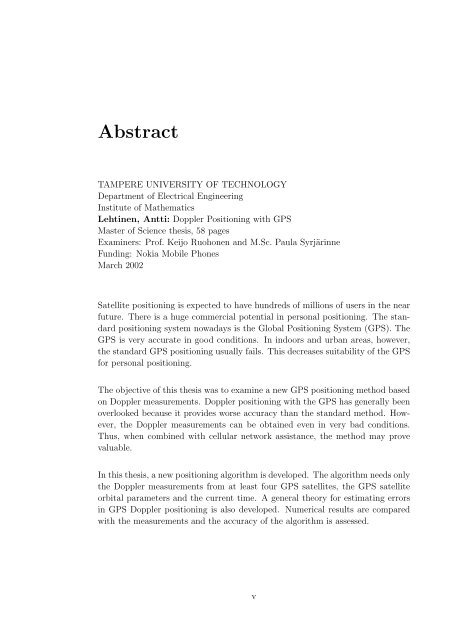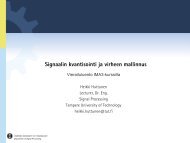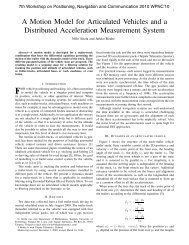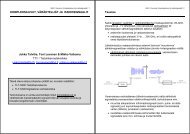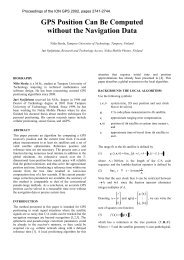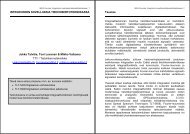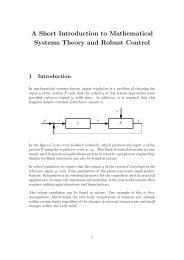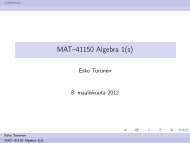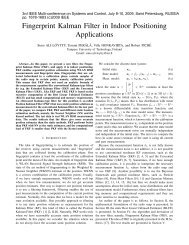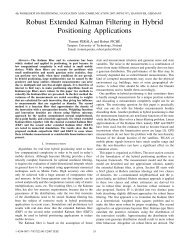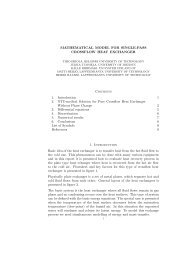Antti Lehtinen Doppler Positioning with GPS - Matematiikan laitos
Antti Lehtinen Doppler Positioning with GPS - Matematiikan laitos
Antti Lehtinen Doppler Positioning with GPS - Matematiikan laitos
Create successful ePaper yourself
Turn your PDF publications into a flip-book with our unique Google optimized e-Paper software.
Abstract<br />
TAMPERE UNIVERSITY OF TECHNOLOGY<br />
Department of Electrical Engineering<br />
Institute of Mathematics<br />
<strong>Lehtinen</strong>, <strong>Antti</strong>: <strong>Doppler</strong> <strong>Positioning</strong><strong>with</strong> <strong>GPS</strong><br />
Master of Science thesis, 58 pages<br />
Examiners: Prof. Keijo Ruohonen and M.Sc. Paula Syrjärinne<br />
Funding: Nokia Mobile Phones<br />
March 2002<br />
Satellite positioningis expected to have hundreds of millions of users in the near<br />
future. There is a huge commercial potential in personal positioning. The standard<br />
positioningsystem nowadays is the Global <strong>Positioning</strong>System (<strong>GPS</strong>). The<br />
<strong>GPS</strong> is very accurate in good conditions. In indoors and urban areas, however,<br />
the standard <strong>GPS</strong> positioningusually fails. This decreases suitability of the <strong>GPS</strong><br />
for personal positioning.<br />
The objective of this thesis was to examine a new <strong>GPS</strong> positioningmethod based<br />
on <strong>Doppler</strong> measurements. <strong>Doppler</strong> positioning<strong>with</strong> the <strong>GPS</strong> has generally been<br />
overlooked because it provides worse accuracy than the standard method. However,<br />
the <strong>Doppler</strong> measurements can be obtained even in very bad conditions.<br />
Thus, when combined <strong>with</strong> cellular network assistance, the method may prove<br />
valuable.<br />
In this thesis, a new positioning algorithm is developed. The algorithm needs only<br />
the <strong>Doppler</strong> measurements from at least four <strong>GPS</strong> satellites, the <strong>GPS</strong> satellite<br />
orbital parameters and the current time. A general theory for estimating errors<br />
in <strong>GPS</strong> <strong>Doppler</strong> positioningis also developed. Numerical results are compared<br />
<strong>with</strong> the measurements and the accuracy of the algorithm is assessed.<br />
v


